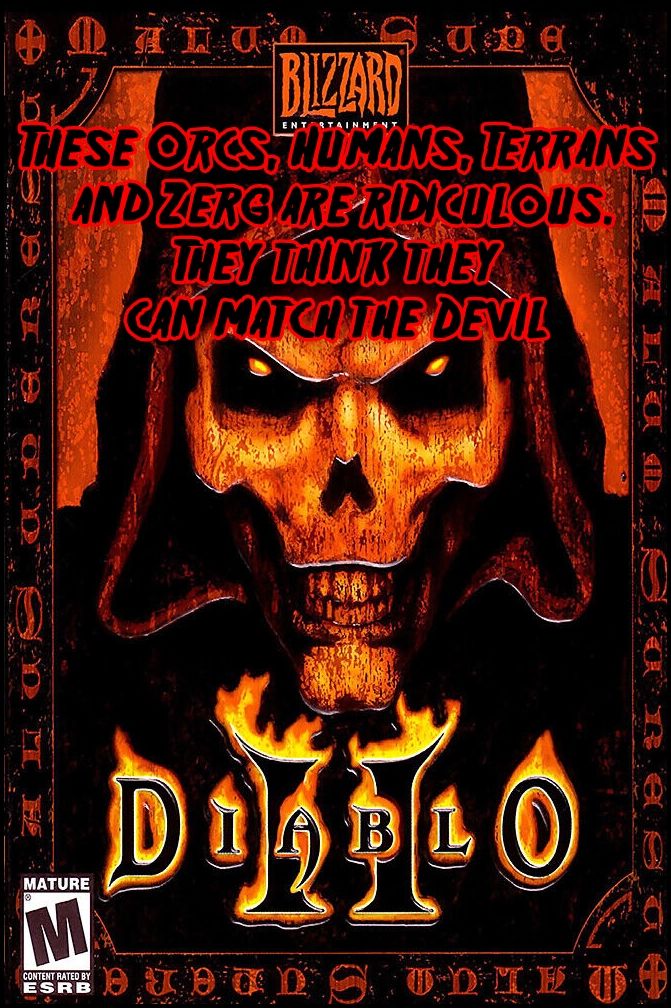
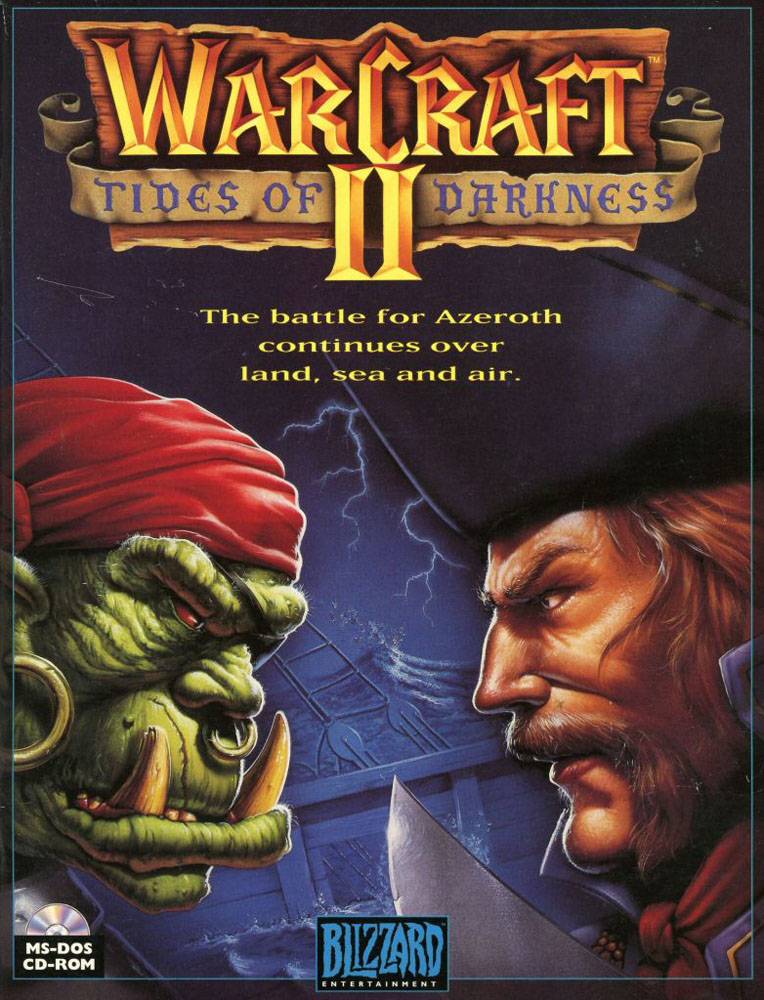
[WarCraft 2] Work began about a quarter of a year after WarCraft 1's release, in February 1995. The game went on sale on December 5th of that same year in America and Australia. It debuted in Europe a month later. I once speculated that WarCraft 2 was developed so quickly because WarCraft 1 was probably just one giant beta version. The truth is different – WarCraft 1 was a success, the team had a lot of assets on hand, the lore creator was eager to create the title (and had, or still has, a capacious imagination), they also had a large team, and hiring top programmers significantly accelerated the work.
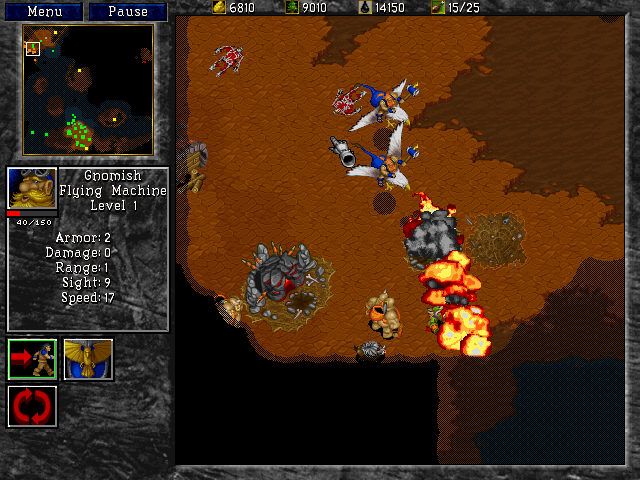
Contrary to what some say, it wasn't an external studio that created the expansion for W2. Or rather, Cyberlore Studios failed to deliver a sufficiently good product, so Blizzard terminated the contract and completed the work for them. This meant designing another single-player campaign and creating additional multiplayer maps. Similar to Doom 1 & 2 and Wolf 3D, several non-canonical expansions authorized by Blizzard were created. These didn't expand on the story, merely added maps. The game also released on the PS1 and Sega Saturn in 1997. Due to technological limitations and, above all, more difficult controls, the game was modified accordingly. In the beta version, a two-player mode was also available (via a peripheral cable), but this feature didn't make it into the final version. Just as W1 propelled them into the top league, W2 cemented their position, earning them comparisons to top-tier players like Westwood, Id Software, and Lucas Arts. The game received high scores ranging from 8/10 to 9.5/10. Within a year, 1 million copies were sold, and by 2001, over 3 million. Counting all versions, over 20 million copies were sold in total.
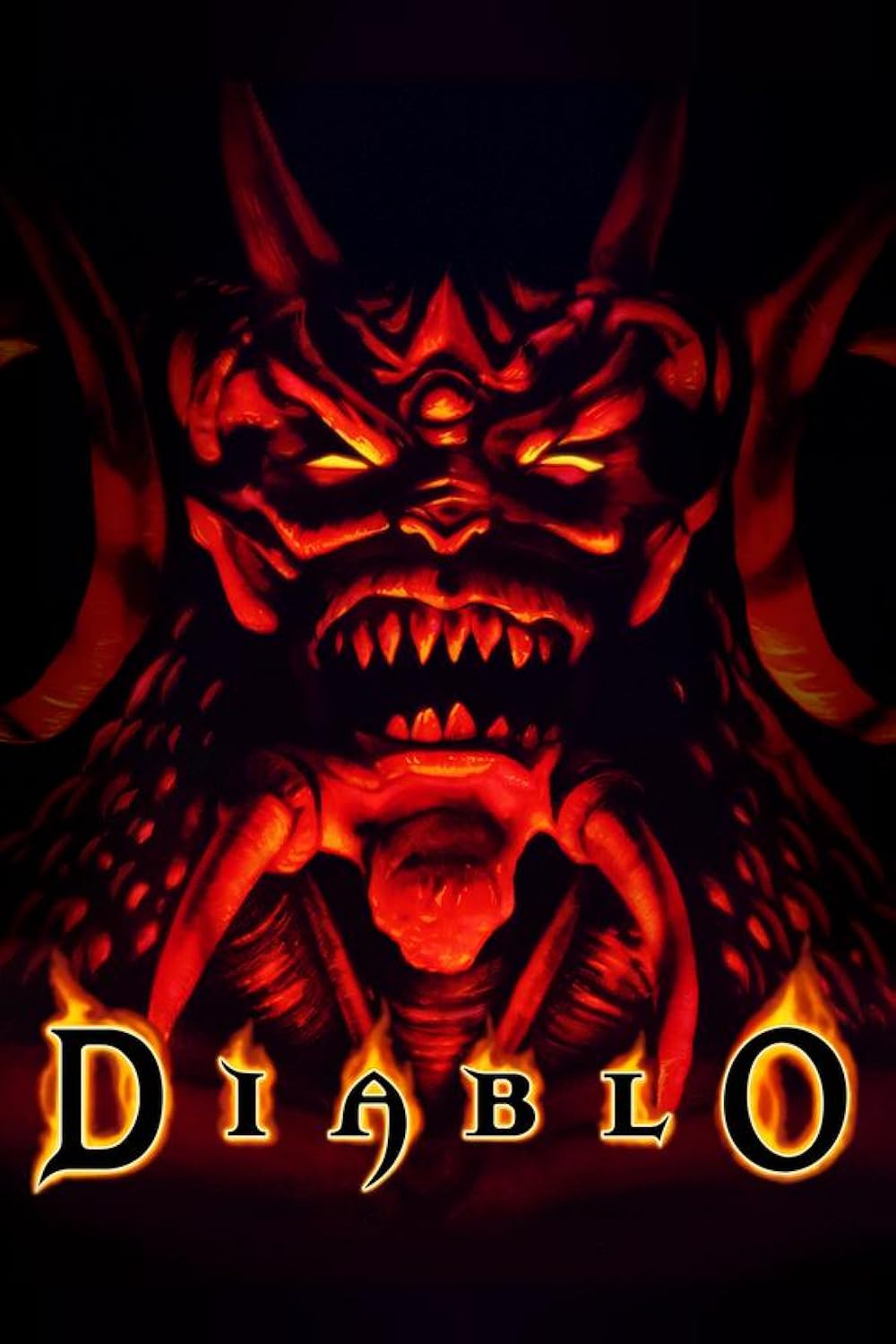
[Diablo 1] After the release of W2, and before SC1, Blizzard created its biggest hit. If it weren't for him, WoW might never have been created. I'm not a Diablo fan, but you have to give God what's God's and the Devil what's Devil's. The number of copies sold is one of the best, if not the best, ways to measure the popularity of games, as well as any commercial product. You already know the sales of Warcraft 1 & 2. D1 alone sold 2.5 million copies, and D2 over 15 million. Is there a difference? My beloved Warcraft 3 (including its expansion, which sold a million copies) sold 5.5 million, a little more than 33% of Diablo 2's total. Everyone says Warcraft 3 saved Blizzard from bankruptcy... Well, that's unfair to the Lord of Hell, because if it weren't for him, the team's adventure would have ended even sooner. In a less enjoyable way.
As an old friend of mine once said, StarCraft and WarCraft players should bow down to Blizzard North. He was damn right. I'm not a fan of the game, but I've always respected it for some reason. Through friends, the internet, and my own experiences with Blizzard, I knew it was a great product. Over the years, I've read countless articles, vlogs, and even a few academic studies about the game's brilliance. The academic studies mostly focused on the design and player experience. I'm guessing it's about the randomization system. I'm not an expert on it. It's not complicated, but I don't have the imagination for such things. I once forced myself to listen to the material with understanding (i.e., repeating some passages several times) because I needed knowledge about Returnal. Both games emphasize randomization, learning the game's mechanics, replayability, and, over time, minimizing losses while maximizing gains in the shortest possible time. Apparently, Diablo is more complex in this regard, but I'm too stupid at math, programming, and thinking in these matters to understand it. Regardless, Diablo is one of the all-time greats that changed gaming forever.
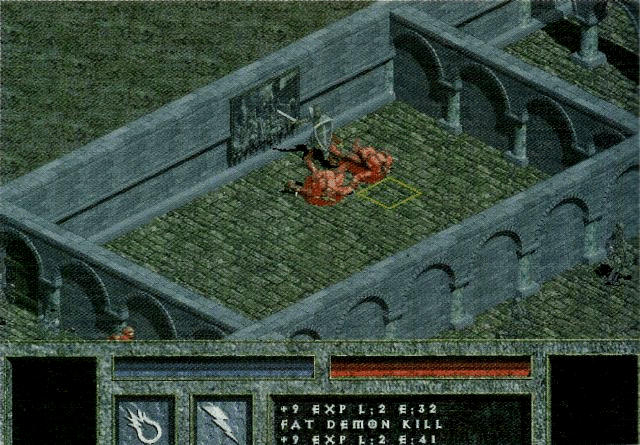
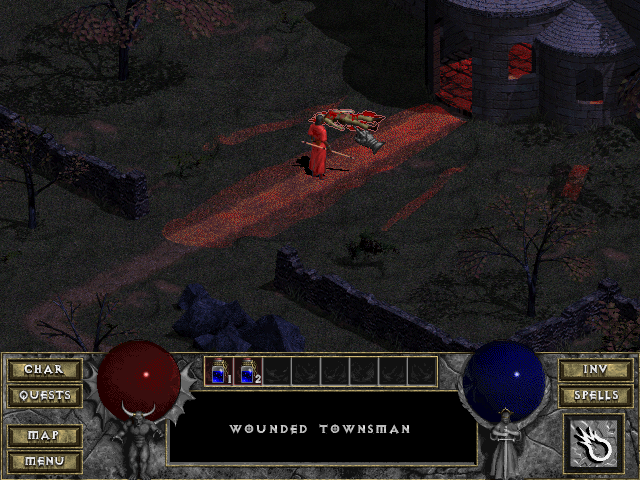
Before I get into the technical aspects, the game was exceptionally brutal. Not only visually, showing blood, Satan, brutally murdered people, etc. This was also due to the fantastic voiceover! Paul Eiding, also known as Aldaris (StarCraft), Mephisto (Diablo 2), and Gul'Dan (W3: Frozen Throne), did an excellent job. His voice and the devilish background music create a unique atmosphere. Initially, he speaks in a calm, relatively confident tone. The atmosphere is also quite light, like in some relatively "pleasant" fantasy. As the game progresses, his voice gradually changes – it becomes more fanatical, sometimes even sadder. Furthermore, the music and background sounds become increasingly unsettling... Back then, it was something special; the game was rated M+17. Apparently, D2 wasn't that dark. If that was true, it's similar to MK1 and MK2 – the first part was darker, more occult. While such violent games have always attracted young boys, it hasn't always been profitable. Recently, the gaming community has been primarily complaining about the left and their DEI, but it's worth remembering that right-wing and more conservative people also have a clear conscience on this matter. Ultimately, I think we learned some good lessons – games like these are aimed at adults, and promotions aimed at younger players have been limited. Regarding the left, we looked at the minority issue from a different perspective. We supposedly knew about it before, but not in the same way we do today.
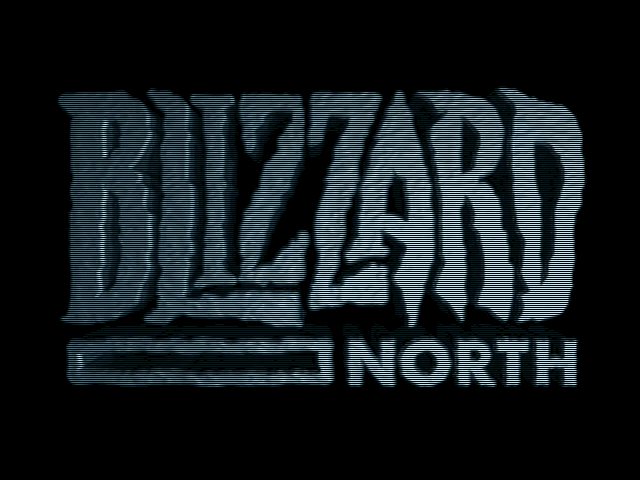
As David Brevik, lead creator of Diablo and the original head of Blizzard North, said, the idea for the game came to him while he was still in school. Diablo was initially intended to be a classic turn-based RPG. He was inspired by the games of his youth – Rogue and Nethack. For this reason, the initial design document included a provision for permanent death. Shortly thereafter, he founded Condor, where he did the same thing as Blizzard – porting games to other platforms. The young creator took his latest work (Justice League Task Force for the Sega Genesis) with him and traveled to Las Vegas for the Consumer Electronics Show. There, he met representatives from Silicon & Synapse, later to become Blizzard, who were doing the same thing. I'd like to point out that they reached an agreement like the people at Id Software, and everything turned out well. Unfortunately, Blizzard initially rejected his idea, saying that RPGs were a dead genre. The situation changed when the company created WarCraft 1. Then they returned to David with the news that the atmosphere had changed. To demonstrate his vision, he took a screenshot of X-Com and inserted it into Diablo. Heh, almost the same as with Warcraft 1 and Dune 2.
Contrary to rumors, the decision to change the turn-based system to real-time was made during development, not beforehand. When Blizzard South said they wanted a different game, the author refused. Instead of foolishly insisting on his position, he called a vote. David was the only one to vote in favor. The young creator called his bosses and told them the concept had changed, but that it meant extended development time to polish the code. This took him several hours. This wasn't the first problem – Blizzard gave them an operating budget of $300,000, which meant $20,000 a year for 15 employees. How would they pay the studio? Therefore, like Id Software and Blizzard, they had to take on additional contracts. While they could have ignored the initial offer, as 3DO wanted to double that amount, they chose not to. They felt they had landed in the right place with their idea. David also rejected an offer from a man who later founded a company like Hotmail. I don't know if it still exists, but if you're 30 or 35 years old, you're probably familiar with it. If he had agreed to his terms back then, which I consider modest, he would have netted $40 million, 10% of the company's value.
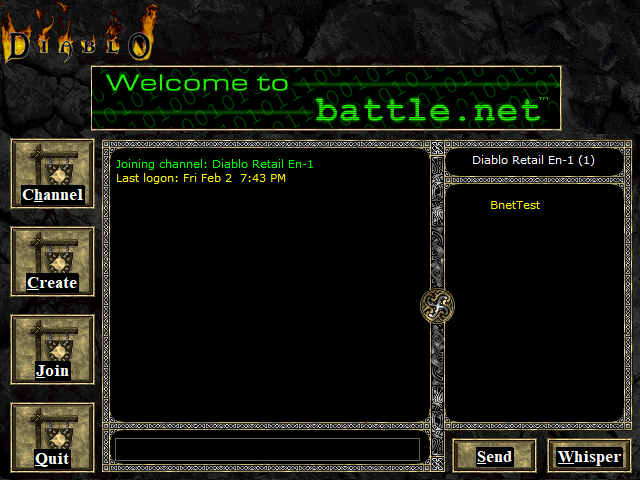
Did you know that we owe the Battle.net platform to David? In other words, the idea and initial implementation were his work, while the final touches were the work of Blizzard. Because it was still the early days of online gaming, the developers left quite a few loopholes for dishonest players to exploit with their cheats. This problem was patched in D2, as Blizzard redesigned the client-server architecture. As I mentioned in the section about Dune 2, in 1991 and 1992, the mouse wasn't yet such an obvious gaming tool. I don't remember what it was like in 1996, so I Googled it—no way. Playing with a mouse was pretty obvious to me back then. David wanted the game to be as simple and fast as possible. So his mother could play the game after a very short training session. The point is, when testing such things, it's best to bring in people with no experience – that way we can test the game most thoroughly. And we'll see if we missed any obvious flaws that we didn't notice. When it comes to dynamics, they didn't want to limit themselves solely to the game's pace. They also wanted to quickly create characters and immerse them in the world of Sanctuary. When designing the menus, they were inspired by Doom, which I don't need to explain; just look at them and compare. The map in Diablo, on the other hand, was modeled after another FPS game, Dark Forces.
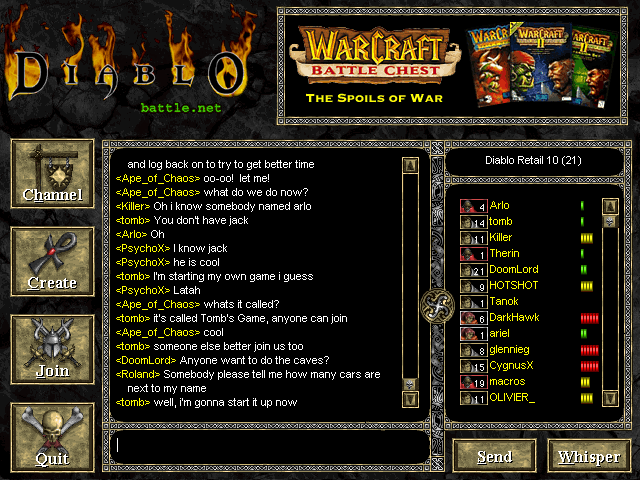
Despite a nine-month crunch, they failed to deliver the game for the most profitable trading period. They delivered it a few days later, when it was worse, but still "okay." Of course, I'm talking about Christmas, the best time for all traders worldwide. People are more naive then, willing to overpay for a product, scatterbrained, buying gifts for anyone, even those we don't like, etc. And they have a cash reserve especially for this period. Children too – if they can't save up, they always have their parents and their wallets. I learned this from someone who is a salesperson with extensive, long-standing experience. Although Brevik suffered from this (his wife was pregnant, giving birth three days after the release), he also admitted that crunch is unfortunately sometimes necessary. I'm not defending this, because toiling for a quarter or, I don't know, six months is one thing, and longer is another. Nevertheless, this industry pathology is often necessary. Just like writing a book – during the final stages of production, the developers' attention is fully focused on perfecting the product, and they solve problems methodically, one by one.
The game was widely praised, receiving top (or near-top) scores of around 90%. They praised everything I've already mentioned: the atmosphere, replayability, atmospheric soundtrack, difficulty level, multiplayer mode, addictive gameplay, graphics (it looked nice on release day), variety of items, enemies, etc. Computer Gaming World, GameSpot, and Computer Game Entertainment named D1 Game of the Year. The game also garnered other awards and, like any revolutionary title, launched a new genre. Just as FPS games were long called "Doom-like," I heard these types of games called "Diablo-like" throughout my teenage years. In Doom's case, this period lasted much shorter. Since I didn't play much Diablo, I had to rely primarily on one site. You can find the full text on the game developer website.
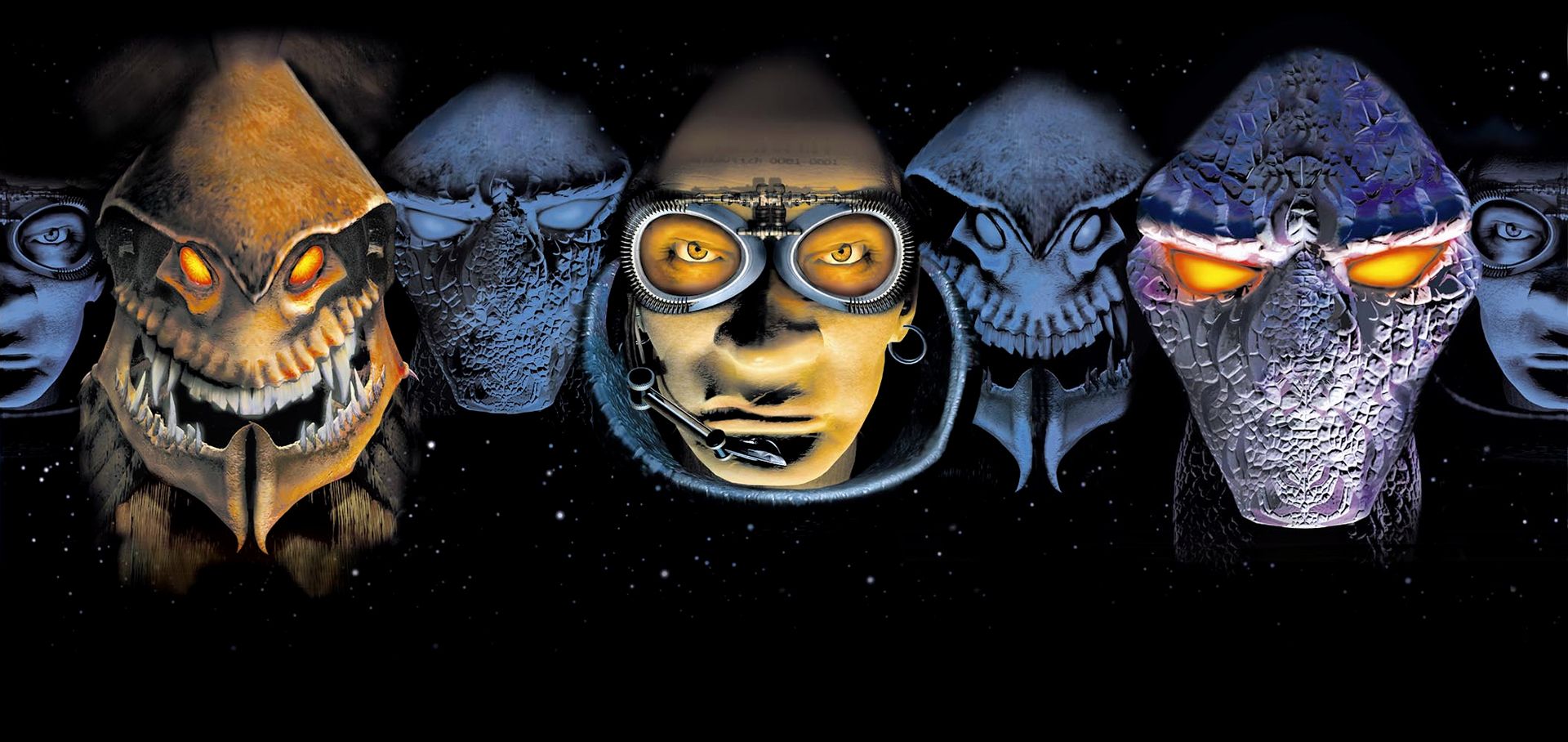
[StarCraft 1] Work on the new game began in 1995. Initially, they used a heavily modified W2 engine, but it was ultimately abandoned after the game's presentation at E3 in 1996. The early version of SC was too similar to the previous product, and something new had to be invented. Therefore, they redesigned the game, adding many new features. For example, they added invisibility and burrowing underground. However, this still wasn't enough. One of the producers, Bill Roper, announced that their project would resemble a game of chess. I'll take this opportunity to look a little further into the future, and then even further. Indeed, just as games similar to D1 were for many years called "Diablo-like," SC1 was for most of its time associated with dynamic chess. Or rather, a combination of a complex, intricate game with dynamic gameplay. Slightly simplified, but requiring the same, or even greater, knowledge, the ability to make good decisions, and anticipate opponents' moves. At that stage, it was great fun and motivating. And when we beat a Korean in a ranked match, we had reason to celebrate! Why a Korean? Because Asians demonstrate a talent for grinding and perfecting gameplay. Koreans especially love SC, and for this reason, they recruited the best players into their army. Apparently, with quite good results.
As Krzysztof M. Maj (Polish columnist), our colleague from Hive, Maciek Ficek, and Kiszak (Polish streamer) rightly pointed out, SC2 has been unplayable for ordinary mortals above a certain level for several years now. The entire process is too mechanical and relies on repeating moves down to the second. It's the same in every game – DotA2, LoL, PoE 2, etc. It was the same at the W3 RoC stage, but the scale was completely different. Everyone copied Grubba's 4K builds, and not just his, but not methodically. This stemmed from ignorance and the small prize pool. Players didn't yet know it was possible, and the "supporting" software was limited to simple replay analysis. It's no wonder, where there's money, there naturally appear people who want to maximize profits. We can't escape this, or at least I don't see any way to turn us away.
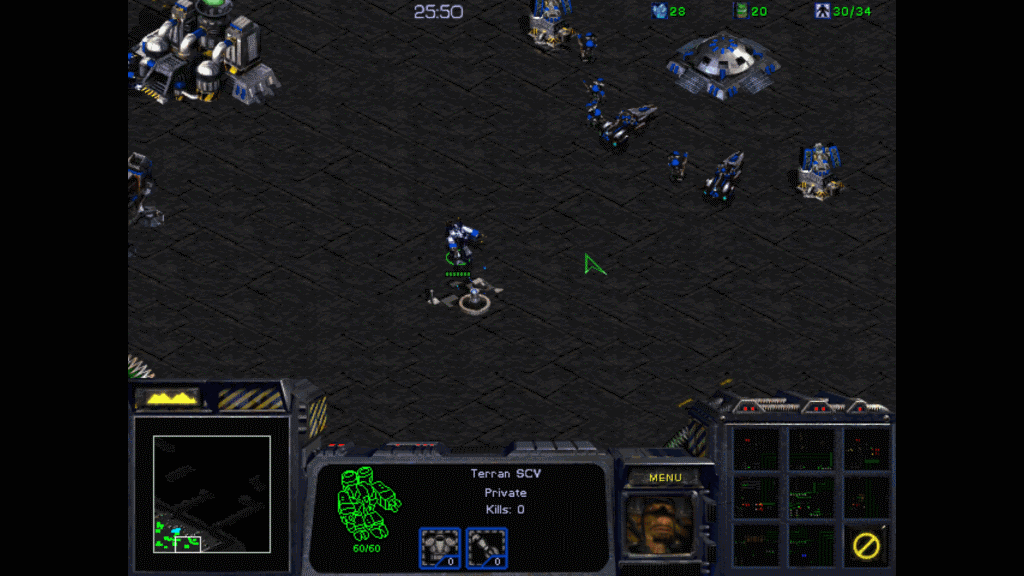
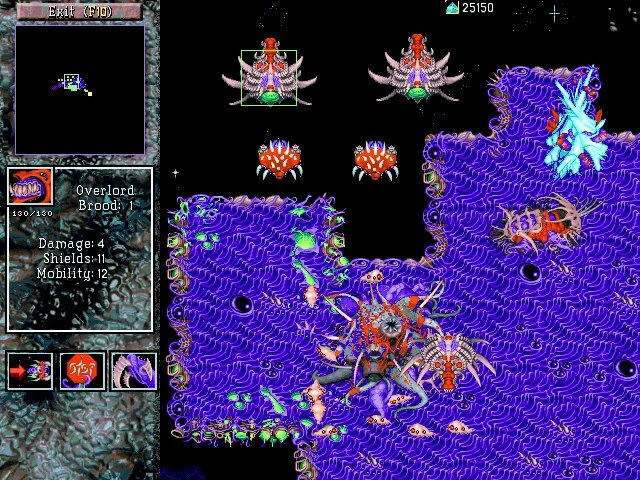
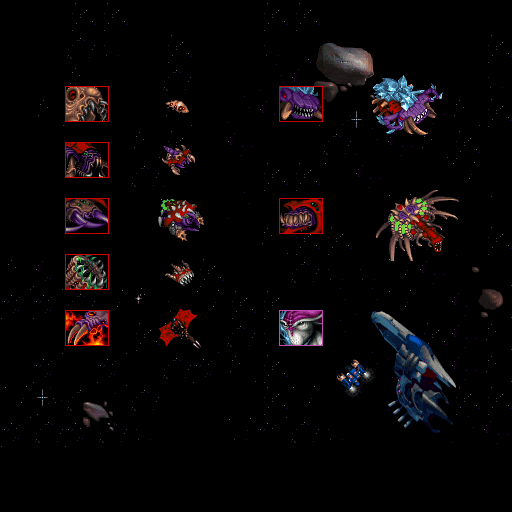
A revised version of SC1 was presented a year later. The player view was changed to isometric. Hand-drawn graphics were replaced with renders, which resulted in more positive reviews. The game was so well-received that a group of fans created the CWAL project – Can't Wait Any Longer. They tried to obtain a beta version design from the company. Blizzard appreciated their efforts – if you want to speed up unit production, enter this code. SC1 went on sale on March 31, 1998, nine days later in the UK. The N64 version took about a year to develop and was released on June 13, 2000. Australia saw its own release a year later. A year later, 1.5 million copies had been sold. Three years later, 4 million. By mid-2009, 11 million copies had been sold.
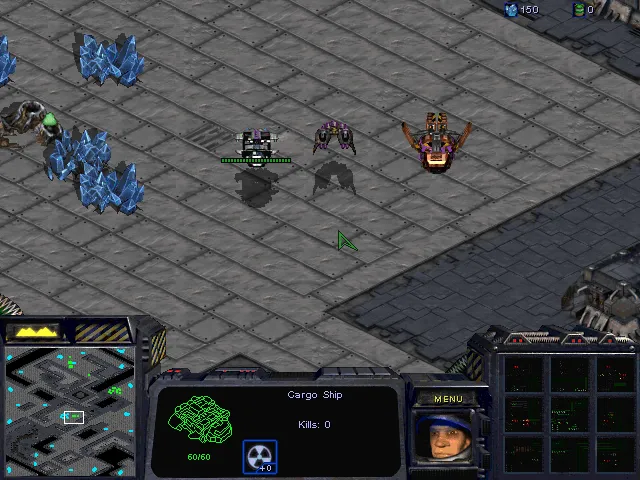
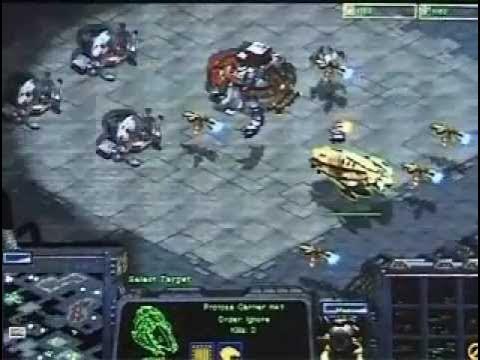
The N64 version debuted in 2000. Blizzard and Mass Media developed it, and Nintendo became the distributor. Originally, the game was intended for Sony's console, like the CnC series and WarCraft 2, but they changed their minds. The game's content was reduced compared to the PC version, and many aspects were compromised (textures, animations, and controls, slightly modified and adapted to the N64 controller). There were no pre-mission briefings, no multiplayer mode, and cutscenes were limited. However, to compensate, they received an additional tutorial campaign, meaning they had two (on the PC, it was the shareware version, but from what I can see, it's different from what I played... According to Google, the shareware version focused on the Protoss. Maybe my memory is deceiving me?). Console owners also received an additional mission. Resurrection IV focused on rescuing one of the human commanders, Alexei Stukov. You could also play it with two players (one player controlling the army, the other focusing on base development) if you had an Expansion Pak. Like all major Nintendo games, the SC64 required a special memory card. More specifically, the Brood War expansion pack. The Expansion Pak doubles the RDRAM from 4 to 8 MB and improves the overall experience of some games, but not in all aspects. For example, it doesn't improve frame rates. Nevertheless, the port received several awards.
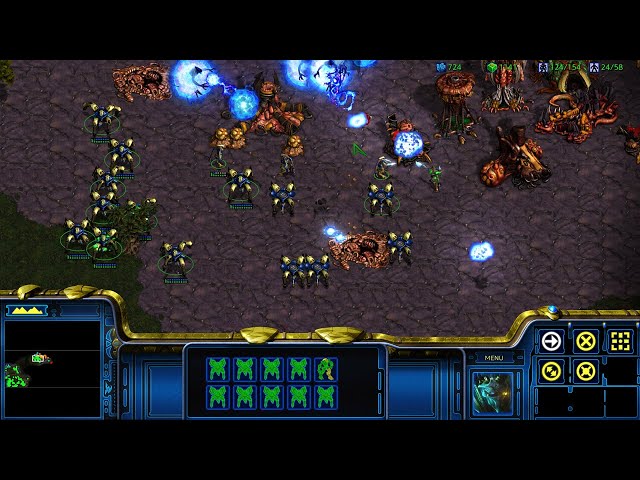
The history of add-ons didn't begin with Brood War. Frankly, I was surprised that so many were released. It started with a free demo version, which included three missions and a tutorial. Loomings was added to the full version of the game in October 1999. The story of the second add-on, Enslavers, takes place during two campaigns, the Zerg campaign. Five missions allowed players to control both the Protoss and the Terrans. It tells the story of a smuggler who seized control of a Zerg Cerebrate. Enslavers was intended as an example of what could be achieved with a map editor. StarCraft: Insurrection was released on July 31, 1998. It was developed by Aztech New Media, and the expansion was authorized by Blizzard. The story focused on expanding on the storyline found in the game's manual – a separate Confederate colony and the Protoss fought the Zerg and tried to contain the emerging rebellion. Insurrection failed to gain much attention from reviewers, criticizing it for its low quality. The next expansion, Retribution, was somewhat better received, but still fell short of quality standards. It was developed by Stardock, published by WizardWorks, and approved by Blizzard. The story involved all three races fighting over a crystal located in Terran territory. After its release, the Brood War expansion was announced, which would finally expand the story and add something new. Now that I'm collecting screenshots for this text, I'm recognizing some of the missions. Sorry, but from the perspective of someone from Europe who had these maps from the beginning (and previously played the shareware version), it's strange. But oh well, at least I quoted from the sources, so I wasn't lying.
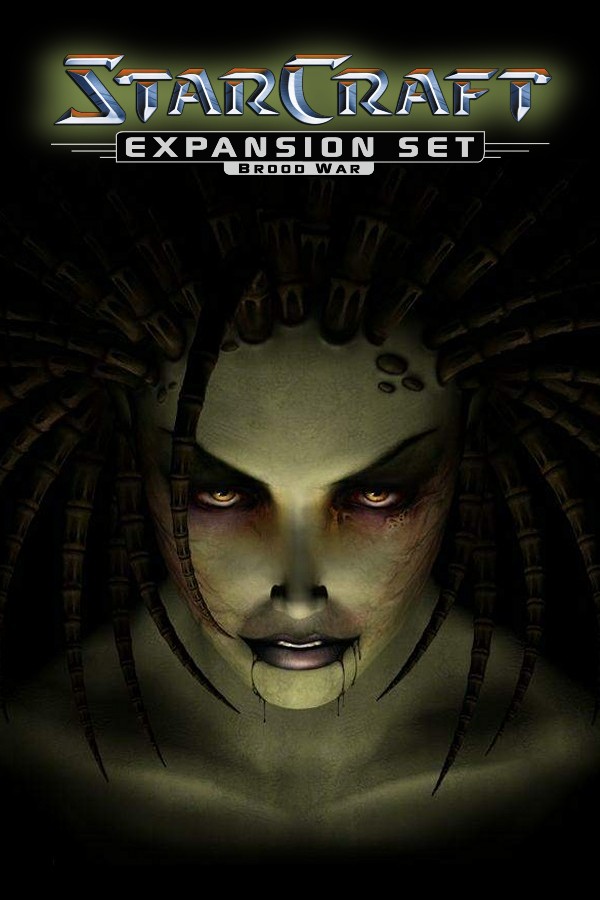
Brood War debuted nearly nine months after the release of SC1 (they originally planned to release it two months earlier, in October). As usual, there was some crunch at the end. Work on it began shortly after the game went on sale. It was announced after the release of Insurrection and Retribution. Blizzard learned from the W2 expansion – they took the main work themselves, while some of the less important work was outsourced to Saffire.
Why did I say "less"? Because level design is just as important in RTS games, but it can be handled by talented, junior-level creators/programmers trained in the